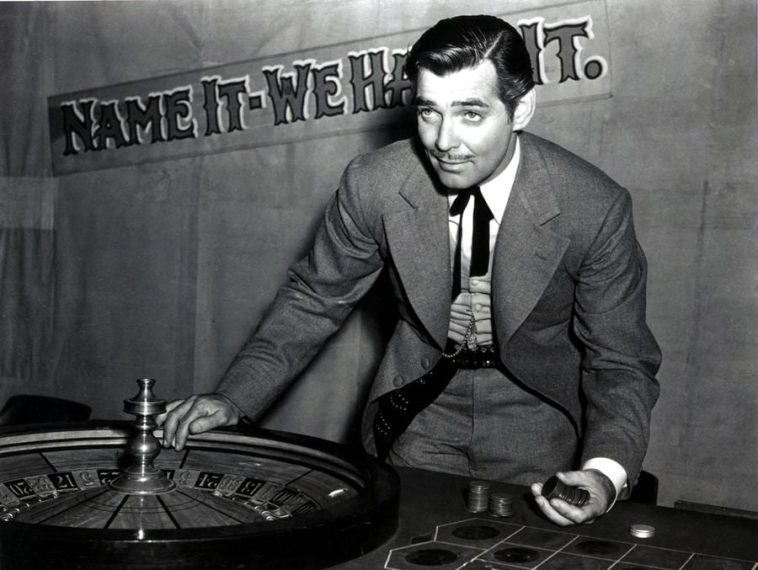William Clark Gable, hailing from the humble town of Cadiz, Ohio, would burgeon to such prominence in Hollywood that he became known as its King during his lifetime. His meteoric rise to the top, however, was not achieved single-handedly. In fact, there were several influential women in his life who spearheaded his journey from a common actor to a cherished legend.
Born in 1901, Gable reminisced over his early years working as a farmer, lumberjack, and telephone repairman. A fervent lover of music and the immortal works of Shakespeare, his aspirations in stage acting were at odds with his father’s expectations. Nevertheless, upon breaking free from his father’s grasp, Gable set his sights West.
The next chapter of his life began in Oregon where he met Josephine Dillon, an adept theatre manager, who took him under her tutelage. She instructed him on the power of speech and the art of body language. Moreover, she invested in his physical appeal; funding his dental correction, guiding his sartorial choices, and even suggesting the use of his middle name in his professional sphere.
Their professional bond transcended into a personal one, and despite the age difference of 17 years, Gable and Dillon got married in 1924. Under Dillon’s discerning management, Gable started journeying into the world of theatre, gracing stages in Houston and New York. He also dabbled in silent movies, securing small roles that hinted at his potential. Their marriage ended in 1930, shortly before Gable committed to a permanent career in movies.
His journey into the cinematic world was a treacherous one, marked by initial failures. Notable film producer Darryl F. Zanuck passed up the opportunity to acquire Gable’s services for Warner Bros. But MGM, another powerhouse, saw potential in him and aptly paired him with Joan Crawford for the 1931 film Dance, Fools, Dance. Any rumors circulating around the pair didn’t affect Gable negatively; they only served to increase the allure of his persona for his besotted fans.
Gable’s ascent to the apex of Hollywood hierarchy found momentum with his marriage to Carole Lombard and the unforgettable role of Rhett Butler in the 1939 cinematic masterpiece Gone With the Wind. It was during the production of No Man of Her Own in 1932 that Gable and Lombard first crossed paths, but it took a chance encounter at a party years later to ignite the undeniable chemistry between them.
Montiel confidently says that Gable and Lombard were a perfect match. Their 1939 wedding marked a shift in Gable’s life. The Hollywood rascal was transforming into a devoted husband. The couple, basking in their marital bliss, was perceived as the golden duo of Hollywood till Lombard tragically passed away in a plane crash.
It was the vivacious Lombard who first introduced Gable to Margaret Mitchell’s riveting novel Gone With the Wind. Initially, Gable was reluctant about partaking in a ‘women’s picture’, and even voiced his opposition against a scene where Rhett exhibits emotional vulnerability over Scarlett’s miscarriage. Eventually, his performance opposite Vivien Leigh in Gone With the Wind did more than just secure his legacy; it cemented his place in cinematic history.
Gable, nevertheless, maintained a modest view of his mettle as an actor. He quipped about his potential epitaph in a very nonchalant demeanor, saying, ‘When I die, they’ll write on my tombstone – he was lucky and he recognized it.’ Gable’s humility kept his celebrity life grounded even when his fame had skyrocketed.
The legacy of Gable is significantly attributed to the influential women in his life – right from Dillon who molded his raw talent into a refined craft, Crawford who walked along with him during his initial steps in Hollywood, to Lombard who nurtured his emotional depth and brought out a softer side to him. Each of them played a vital role in transforming this Ohio-born actor into a revered Hollywood legend.
Remarkably, Gable never seemed to forget his roots, deeply connected to his humble beginnings, and this characteristic enriched his on-screen persona. His performances were always marked by an intrinsic authenticity, as if he was drawing from his own experiences, giving life and depth to his characters.
It is also worth highlighting that Gable stepped into the realm of acting not driven by dreams of fame and fortune, but merely fueled by his passion for performing arts. Whether it was his admiration for Shakespeare or his love for music, Gable’s artistic motivation kicked off his journey towards his ultimate destiny.
Beyond being a remarkable talent and a legendary actor, Gable impressed with his human elements – his amiability, humility, and a sense of solidity that endeared him to fans and colleagues alike. These traits contributed to his popularity just as much, if not more, than his illustrious performances in iconic movies.
By the time of his death, his fame had catapulted him to a level where his peers referred to him as the ‘King of Hollywood.’ But Gable did not let this title get to his head. He always believed that he was just lucky, grounding him despite the dizzying heights of success.
Carole Lombard, notwithstanding her untimely death, left an indelible mark on Gable’s life and career. Her impact on his personal growth and professional trajectory was a testament to her own undeniable influence and charisma. Lombard’s understanding of Gable’s capabilities helped shape him into an actor who could hold his own among the glittering stalwarts of Hollywood.
Indeed, the saga of Clark Gable stands as a tribute to the power of dreams, passion, and a bit of luck. But more than that, his story is a testament to the profound influence that significant people in your life can wield. Gable’s success would not have been possible without the women in his life who helped shape him and his career up.


